I am Angdui Phuntsok, a master woodcrafter and carpenter from Kibber village in Himachal Pradesh’s Lahaul and Spiti district. While growing up, I helped my family herd livestock (sheep, goat, cow, yak, and dzomo) in our village pastures and plough our barley fields. When I was 20, I took up carpentry work and learned to make windows, door frames, and kawa (wooden pillars) for traditional mud houses. I worked closely with Spitian mud-house builders and artisans who were skilled in stone masonry and started applying this knowledge in my work as a house mistri (chief artisan).
For approximately 27 years now, I have been building traditional houses and doing carpentry work in Spiti. I spend my summers building mud houses, consulting, and helping locals undertake various types of renovation work, and devote my time to carpentry during winters.
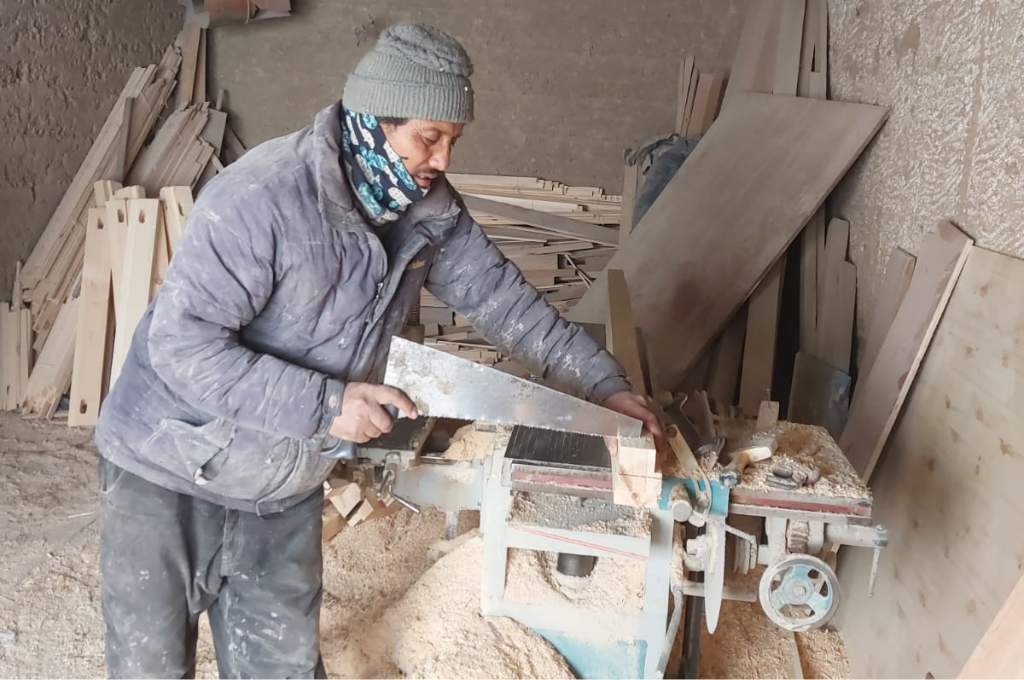
The houses and architectural practices in Spiti have undergone considerable changes since I first started working. One of the major reasons for this is evolving livelihood patterns. While agriculture has remained the primary source of income for people in Spiti, over the years they have moved away from food crops and opted for cash crops such as green pea. Tourism has also become a popular means of livelihood. This photo essay traces the history and reasons for this shift and explores how it impacts Spiti’s culture and architecture.
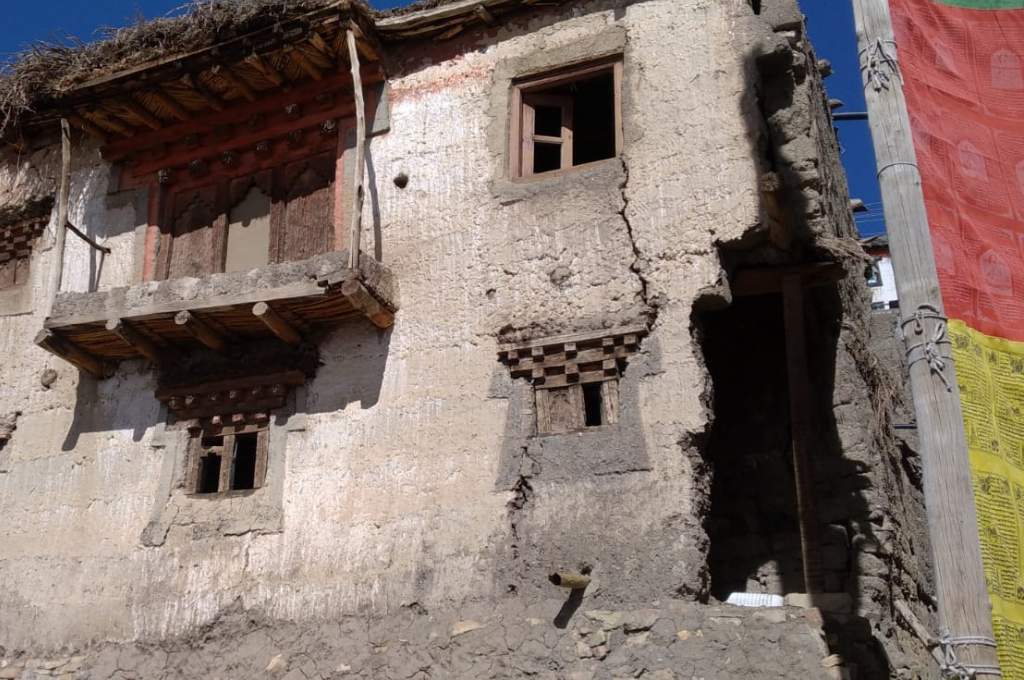
Spiti’s architecture has traditionally been dominated by wood, mud, and stone. The choice of material would also be dependent on local availability and climatic conditions. In addition, due to regional variations, some materials were extremely scarce in certain areas. For example, in the Todh valley region in upper Spiti, raw materials such as wood, good-quality soil, stone, and iron were difficult to find. Hence, the design and structure of a house would be mostly mud-based with minimal use of resources that were locally unavailable. In lower Spiti, in regions like Sham valley, easier access to building materials meant that earth was used extensively to build walls and roofs and stone was used at the base of a building for stability.
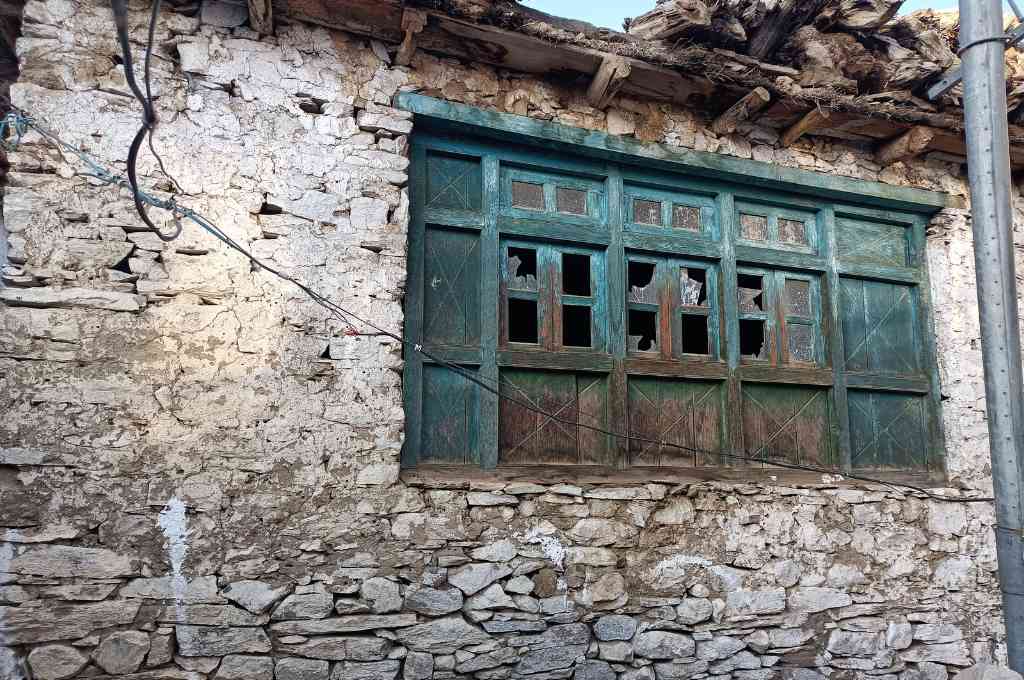
Earlier, Spitians were primarily dependent on agriculture and livestock rearing and the architectural designs were built to accommodate the agro-pastoral needs of the household and the community. Structures for cattle such as corrals, livestock pens, and storage rooms for grains and tools, as well as dry toilets, dhangtseys (open courtyards), and flat roofs were integral to houses in the agricultural society.
The communities were familiar with the local resources and materials used for construction, and the simple architectural methods meant that there was an easy transfer of knowledge. Building a house was a communal event; community members would come together to make shelters for one another in exchange for barley, vegetables, and other products.
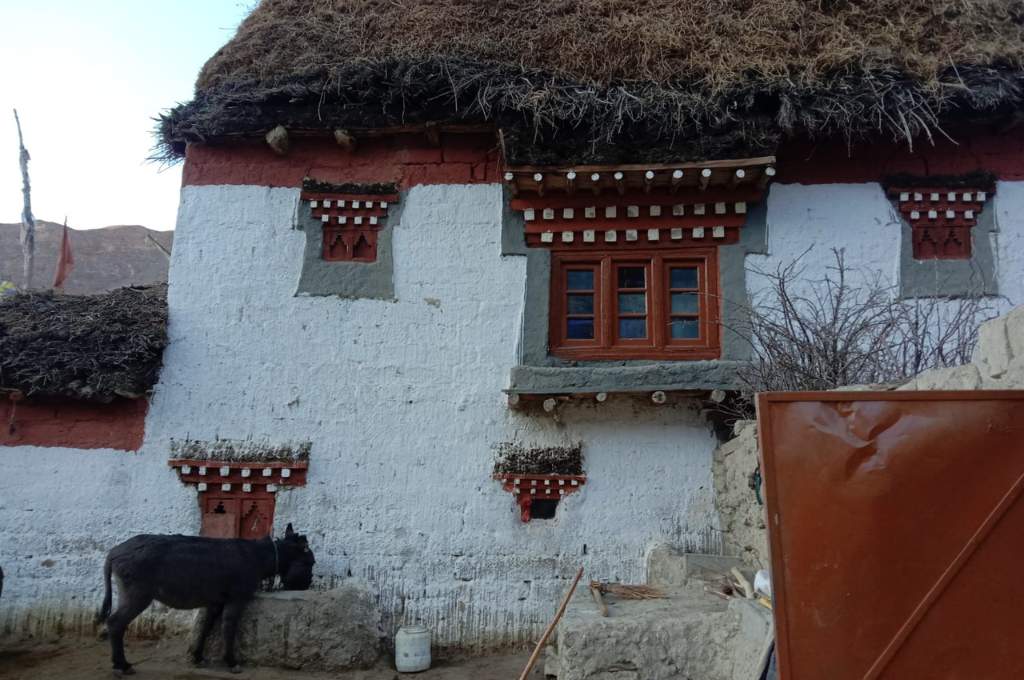
However, things started changing in the 1990s as the government’s encouragement for the cultivation of green pea, a cash crop, began showing rich dividends. The pea farmers started going to places such as Chandigarh in Punjab to sell their produce. While coming back, they would pick up raw materials such as thicker wood, which then started replacing the thinner varieties such as juniper, willow, and poplar that we had in Spiti. People in the towns started aspiring for the big city life including the reinforced concrete (RCC) buildings that they saw there, which favoured materials such as steel, glass, and cement. Now that they had the means to achieve it, the Spitian town architecture started distancing itself from the remote villages.

Concrete roads were constructed and connected to other regions. As the residents of Spiti started interacting with people from other districts, they began adopting their architectural practices. For example, mistris like me would visit hotels in Kullu and study the architecture. We saw that there were attached bathrooms everywhere and tiled roofs which we didn’t have. Those were the days before internet, so we would measure the bathrooms and rooms and document how they were built, and start implementing these learnings when we came home.
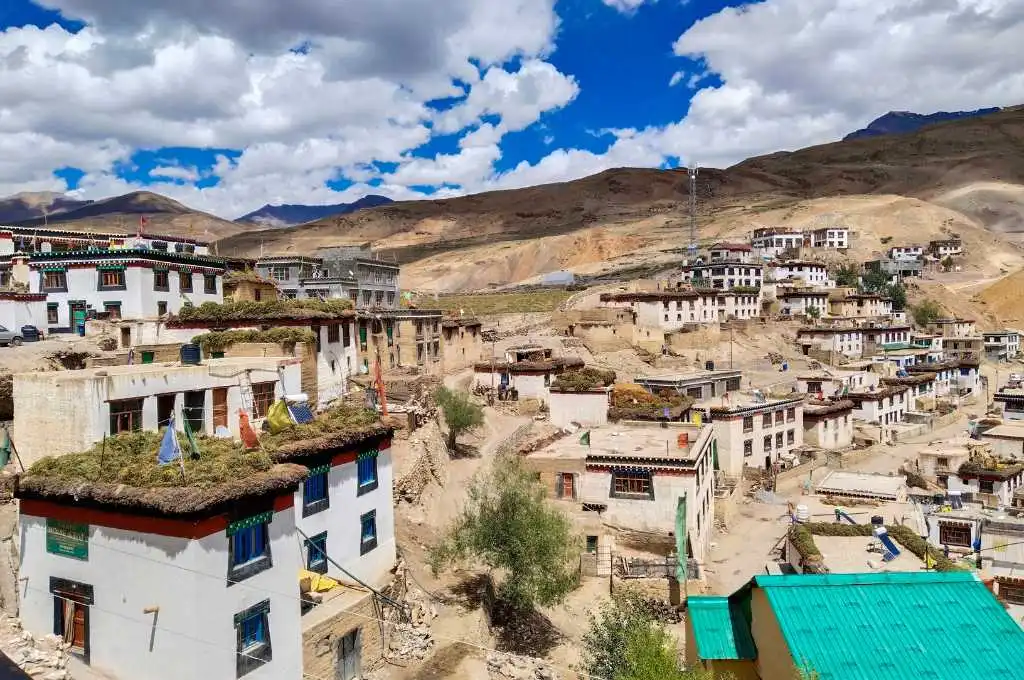
Gradually, Spitian villages such as Kaza, Tabo, Rangrik, Losar, Khurik, Shego, and Lara began attracting many tourists, which proliferated the area with homestays and hotels. The economic boom meant that young people from the community were now going to schools and colleges, and entrepreneurship and jobs became real career options.
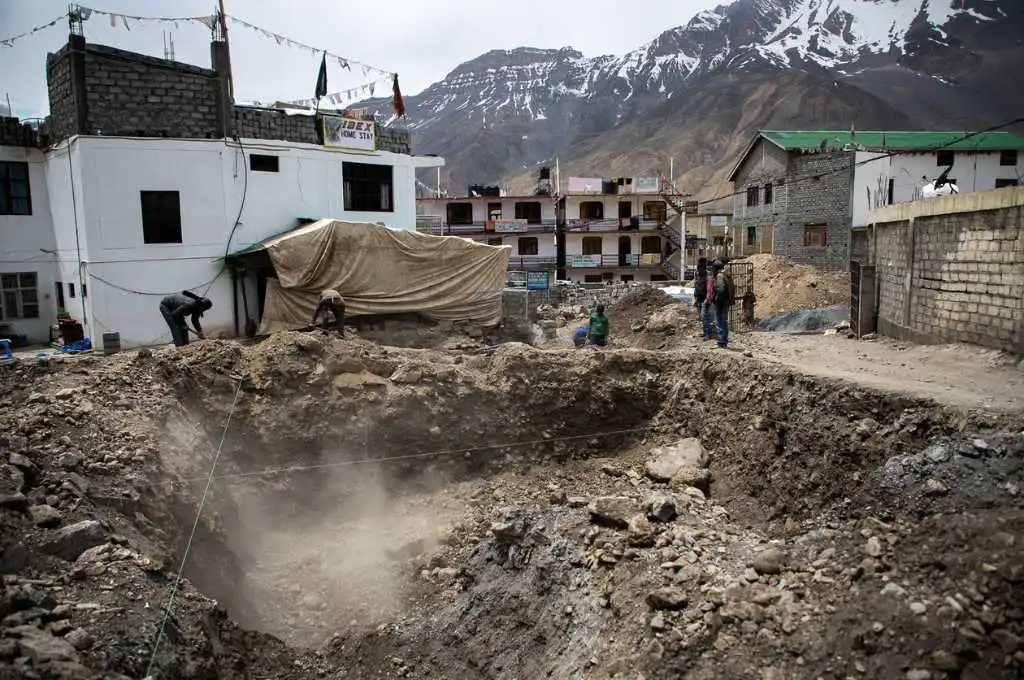
While the need for construction grew, communal labour was neither available nor could it meet the scale of demand. Spiti required workers, and they came in the form of migrants from lower Himachal districts such as Mandi, Kangra, and Shimla, and even from as far as Rajasthan, Bihar, Odisha, Jharkhand, and Maharashtra. This worked for the building owners because, unlike the locals who only worked in conducive weather conditions such as April–May when it is neither too hot nor too cold, the migrants were ready to work throughout the year. Our elders would advise us against building houses in June–July for fear of rain, but now construction goes on under tarpaulin shades during monsoon too.
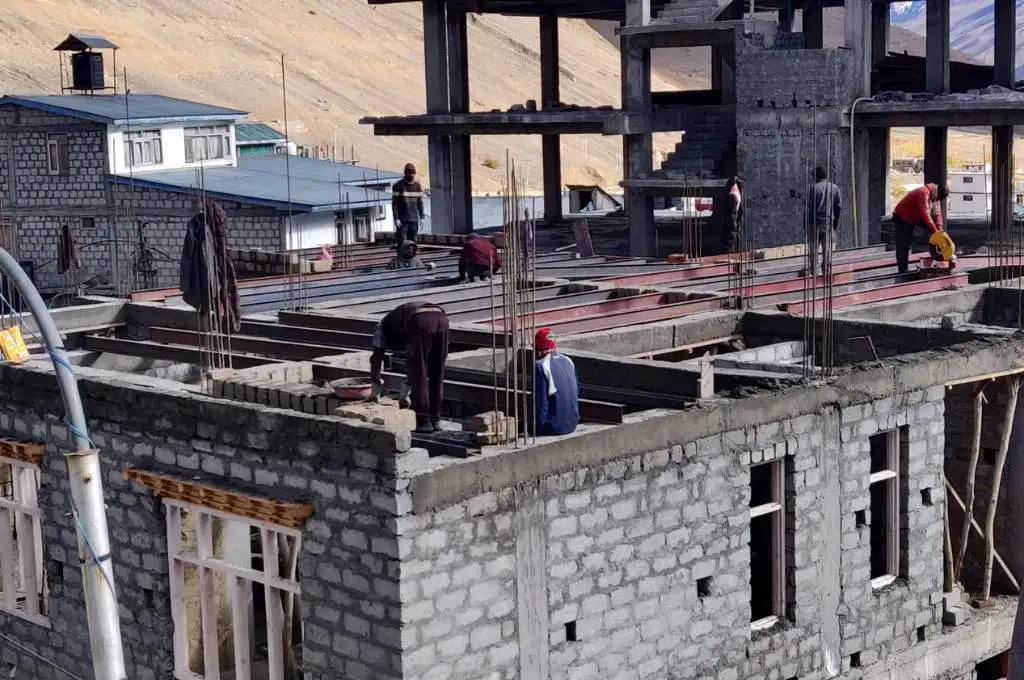
Mistris like me are still needed because we teach the workers indigenous techniques such as the use of stone in building houses. But we are slowly losing this community knowledge. Building a Spitian house was an intuitive process for the communities because they already knew the basics. It didn’t involve unnecessarily complex methods and tools for implementation. We had our gyangon-da (a rammed-earth mason), piti dor-si (stonemason), and piti shingzo-wa (woodcrafter/carpenter) to teach us, but most young people had to learn how to build a floor, a roof, or a livestock pen themselves. The shift to non-traditional, industrial raw materials is now rapidly alienating locals from their own land, resources, and indigenous knowledge that they had preserved for generations.
A version of this article was originally published on Himkatha.
—
Know more
- Read this article to understand traditional Spitian architecture.
- Read this article to learn about how women in Uttarakhand are turning into entrepreneurs by running homestays for tourism.






